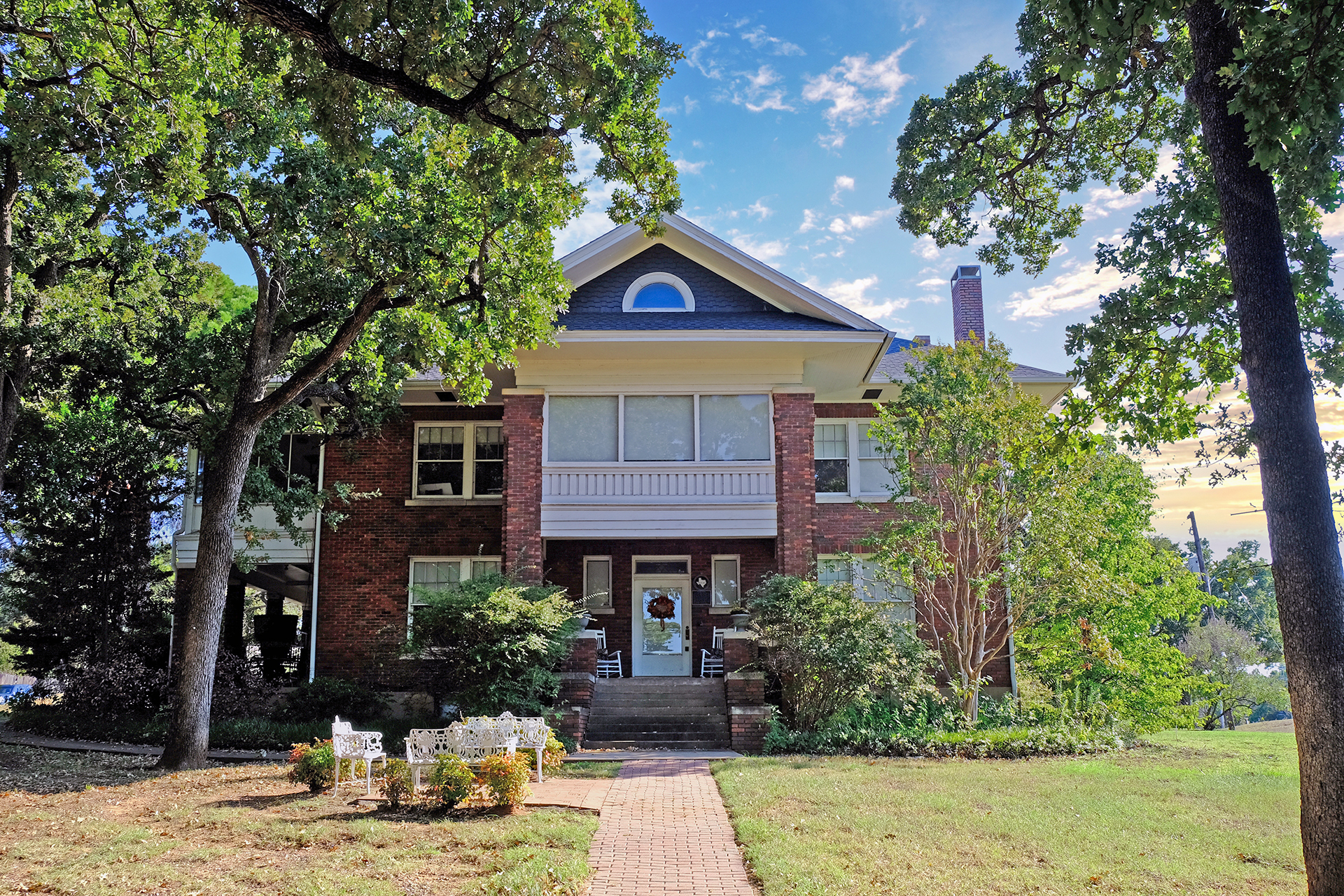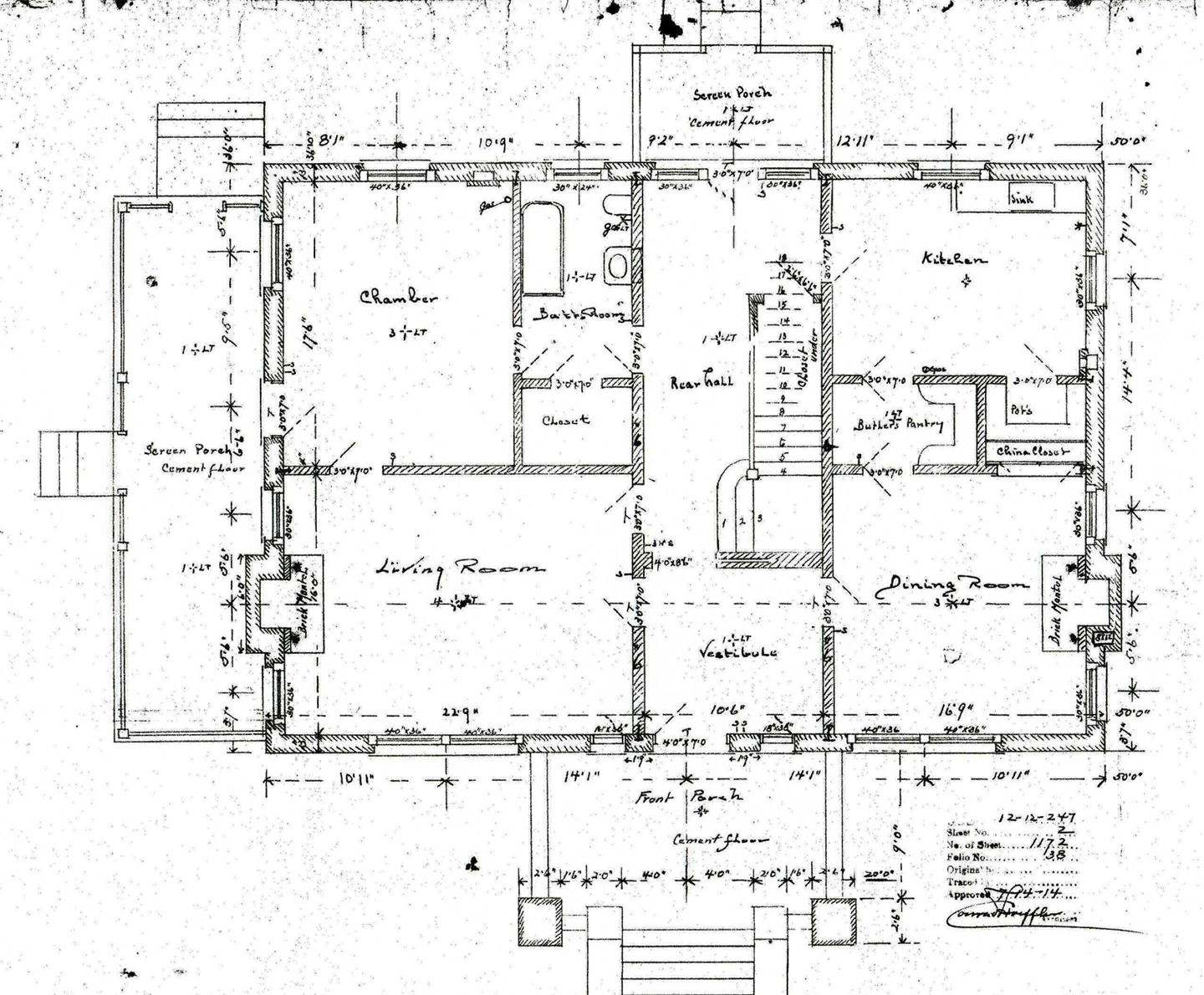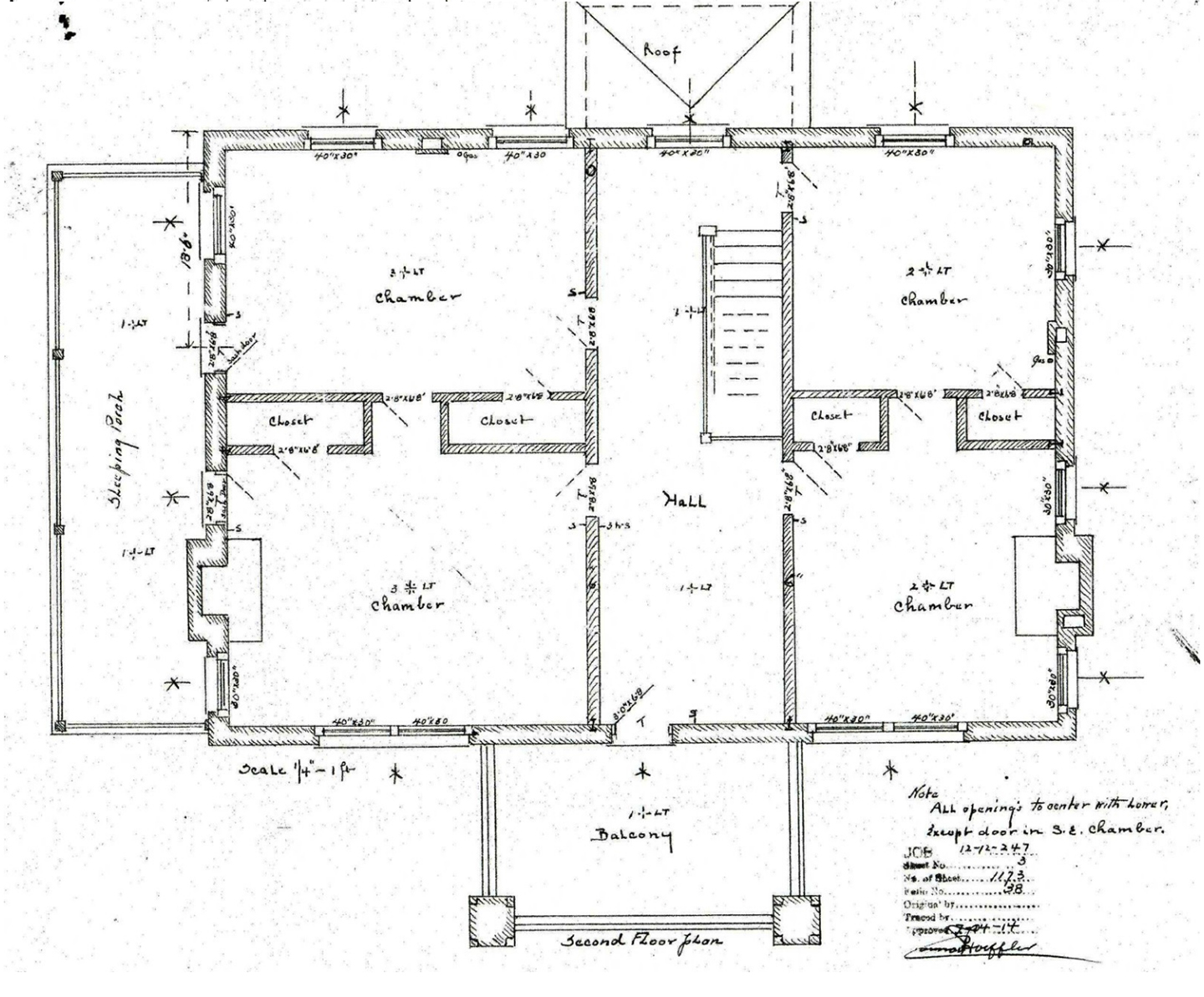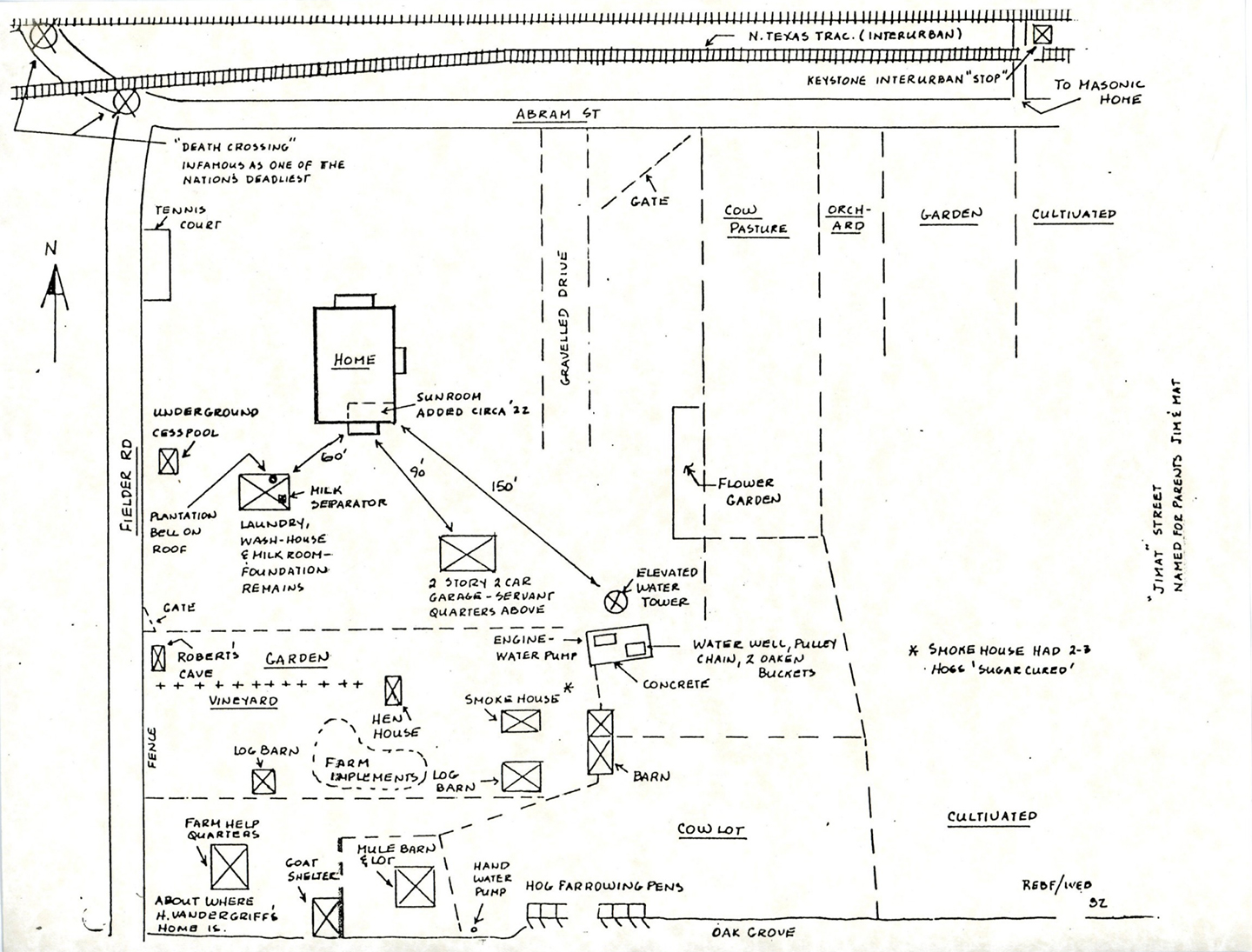
James and Mattie Fielder Build their Dream Home - 1914
James Park Fielder was 25 years old, and Mattie Barnes was 20, when they married in Alvarado, Texas in 1887. James Fielder was born in Tennessee, received a law degree from Vanderbilt University in 1884, and immediately moved to Alvarado in Johnson County, Texas. Mattie was born in Texas, was living in Navarro County at age 3 in the 1870 Census, but by age 13, was living in Alvarado. She graduated from the old Methodist Marvin College in Waxahachie.
James became very successful at farming (in the vicinity of Alvarado/Venus and Dallas - he once owned the land that eventually became the Dallas Naval Air Station), and in the banking business. Over time he acquired large landholdings.
From the latter part of 1901 to 1904 (approx.) the Fielder Family lived in Fort Worth. While living there, James and Mattie became founding members of the Central Methodist Church, with the organizational meeting being held in their home. There was a 1 1/2 to 2 year return to Venus, but James was offered a directorship in the Citizens National Bank of Arlington, and they moved there in 1906. Their last child, Robert E. B., was born, November 23, 1906, in Arlington. [C. B. (Cicero), Alfred (who died at age 3), and Jim, Jr. were all born in Venus.] The Fielders lived on S. Center Street in Arlington.
In 1910, the Fielders purchased a 215-acre farm on the west side of Arlington, for a price of about $80 per acre. The property was filled with large groves of trees and some of the finest farm land in the area. Using current-day street names, the property extended from W. Abram St. on the north to Park Row Drive on the south, and from Fielder Road on the west to Davis Street on the east. Their new home, however, was not built until 1914, when James was 52 and Mattie, 47. The house was to face north toward the Dallas-Fort Worth Road, which is now W. Abram St. Just across the road were the electric Interurban tracks (and the Keystone Stop) which had been laid in 1902; they provided rapid and convenient transportation to and from Arlington, Fort Worth, and Dallas. Just beyond the Interurban tracks were the tracks of the T & P Railway.
James Fielder hired a Fort Worth architect to design his and Mattie's new house to be built on the farm they had purchased. (An architectural evaluation made in 1979 in connection with the application for a State Historical Marker described the home as "A vernacular structure with the wide overhangs of the Prairie style, but the overall composition is derived from the Classical Revival structure of the early 20th century.")
In planning the structure of the house, Mr. Fielder consulted Henry W. Lusher, an old friend and well known contractor who lived in Fort Worth. Mr. Fielder "was very desirous that the house be built with the best in workmanship and materials," and he hired Lusher Construction Company to build it on a "cost plus" basis. The entire house was built under careful supervision of the Fielders. There are several interesting and unusual features about the house. The original 18" #1 wood shingles for the roof were made from cedar, and were hand-dipped in graphite before application to the house. Another unusual feature was the large lintel stones which were used over and under the doors and windows. They were pulled up the hill to the site by 4 or 6 mule-team wagons. Perhaps most interesting of all is the detailed work on the outside wall of the house. Starting from the inside to the outside was a very detailed type of brick laying: First, inside the house, were the plaster walls, then steel lathe behind the plaster (the first use of steel lathing in the area), after which clay tile was glued to common brick with mortar, and fastened to the face brick seen on the outside of the house.

Besides making sure the outside of the house was built with the best materials, Mr. Fielder also made sure that the inside was given the same attention. The inside was heated by natural gas and the four fireplaces. In the summertime, the house was kept cool because of the high ceilings, thick walls, and the location of the house on a hill. Also, the house was supplied with hot water, using natural gas for heating it. The house itself was about 6,000 sq. ft. and consisted of a basement, first floor, and a second floor. (See the copies of the original blueprints on this page.) The first floor contained the dining area, the living room, the kitchen, a screened porch on the east side, and the master chamber (bedroom). The kitchen had a large gas stove and a “huge” electric refrigerator. The second floor was built with four more bedrooms, a sleeping porch, and several closets. There was also an open balcony on the second floor, overlooking the front yard. The original house plans show only one bathroom, on the first floor adjacent to the master chamber. However, a second floor bathroom directly above the one on the first floor was added before construction was completed. We know this because of a statement made years later by granddaughter Patsy “Mattie” Fielder, who lived in the house from early 1915 to 1920 with her family, and who spent summers there every year until she was married. Each of the chambers was painted in either pastel pink, blue, or green. The house was furnished with 1914 contemporary style furniture from Ellison Furniture Company of Fort Worth. Under the main house there was a basement, which during harvest season would be filled with boxes and baskets of fruits and vegetables that Jim and Mattie would give to friends. The only alteration to the house after completion occurred in 1922, after Mattie was injured in an automobile accident in Arlington, and, as a result, was left (for the rest of her life) with mobility difficulties, including some use of a wheelchair. A sun porch was added to the south side off the master chamber, so that Mattie could have a better view of the back yard and the many interesting activities that took place there. The grounds around the big home were filled with outbuildings and other interesting structures. The many interesting features of the grounds surrounding the house are detailed in a diagram/plat on this page. Included was a 2-car garage, with servant quarters above.

It is obvious from this plat that the Fielder farm and home was "a beehive" of activity. Once finished, the Fielder Home became the talk of the town. James and Mattie were quite active in the Methodist Church in Arlington and were well-known and loved by many of the townspeople. It was not unusual for friends to drive out in the afternoon or evenings for a visit. The Fielders were very friendly folk, and welcomed guests. Their home became a center for many social gatherings of people in the area. The Fielder grounds were also used by the town children who would come over to play hide-and-seek in the woods and among the many structures on the property. Mr. and Mrs. Fielder had the finest fruits and vegetables - all types of apples, peaches, plums, grapes, watermelons, and more, and Mr. Fielder's specialty, corn. They loved to share their abundance with family and friends. The major crops grown on the farm were oats, wheat, barley , peas, and cotton. A tradition rapidly developed, and was carried on for many years, that of having the entire family at the Fielder House at Christmastime - James and Mattie, the three boys (C. B., Jim, and Rob) and their wives and children (and their spouses), and grandchildren. One of their sons later wrote that his parents were known for their "incomparable deeds of helping many people financially and lending encouragement and wise counsel to those who came to them." Always involved in community interests, James served as an early Arlington councilman, and for a short time, as Mayor of the City. He was an organizer and member of the original Board of Grubbs Vocational College (1917-1923). When Grubbs Vocational College became North Texas Agricultural College, and a state college, Fielder was made a member of the original Board. Both Grubbs and NTAC were forerunners of The University of Texas at Arlington. He was also a member of the Southern Methodist University Founders Club.

James Fielder died in 1948 and Mattie died two years later. The funeral for each of them was held in the living room of the home they loved so much, their "Home on the Hill," which is 100 years old this year— 2014.
